The Carter Family





BIOGRAPHY
The most influential group in country music history, the Carter Family switched the emphasis from hillbilly instrumentals to vocals, made scores of their songs part of the standard country music canon, and made a style of guitar playing, “Carter picking,” the dominant technique for decades. Along with Jimmie Rodgers, the Carter Family were among the first country music stars. Comprised of a gaunt, shy gospel quartet member named Alvin P. Carter and two reserved country girls — his wife, Sara, and their sister-in-law, Maybelle — the Carter Family sang a pure, simple harmony that influenced not only the numerous other family groups of the ’30s and the ’40s, but folk, bluegrass, and rock musicians like Woody Guthrie, Bill Monroe, the Kingston Trio, Doc Watson, Bob Dylan, and Emmylou Harris, to mention just a few.
It’s unlikely that bluegrass music would have existed without the Carter Family. A.P., the family patriarch, collected hundreds of British/Appalachian folk songs and, in arranging these for recording, enhanced the pure beauty of these “facts-of-life tunes” and at the same time saved them for future generations. Those hundreds of songs the trio members found around their Virginia and Tennessee homes, after being sung by A.P., Sara, and Maybelle, became Carter songs, even though these were folk songs and in the public domain. Among the more than 300 sides they recorded are “Worried Man Blues,” “Wabash Cannonball,” “Will the Circle Be Unbroken,” “Wildwood Flower,” and “Keep on the Sunny Side.”
The Carter Family’s instrumental backup, like their vocals, was unique. On her Gibson L-5 guitar, Maybelle played a bass-strings lead (the guitar being tuned down from the standard pitch) that is the mainstay of bluegrass guitarists to the present. Sara accompanied her on the autoharp or on a second guitar, while A.P. devoted his talent to singing in a haunting though idiosyncratic bass or baritone. Although the original Carter Family disbanded in 1943, enough of their recordings remained in the vaults to keep the group current through the ’40s. Furthermore, their influence was evident through further generations of musicians, in all forms of popular music, through the end of the century.
Initially, the Carter Family consisted of just A.P. and Sara. Born and raised in the Clinch Mountains of Virginia, A.P. (b. Alvin Pleasant Delaney Carter, December 15, 1891; d. November 7, 1960) learned to play fiddle as a child, with his mother teaching him several traditional and old-time songs; his father had played violin as a young man, but abandoned the instrument once he married. Once he became an adult, he began singing with two uncles and his older sister in a gospel quartet, but he became restless and soon moved to Indiana, where he worked on the railroad. By 1911, he had returned to Virginia, where he sold fruit trees and wrote songs in his spare time.
While he was traveling and selling trees, he met Sara (b. Sara Dougherty, July 21, 1898; d. January 8, 1979). According to legend, she was on her porch playing the autoharp and singing “Engine 143” when he met her. Like A.P., Sara learned how to sing and play through her family. As a child, she learned a variety of instruments, including autoharp, guitar, and banjo, and she played with her friends and cousins.
A.P. and Sara fell in love and married on June 18, 1915, settling in Maces Springs, where he worked various jobs while the two of them sang at local parties, socials, and gatherings. For the next 11 years, they played locally. During that time, the duo auditioned for Brunswick Records, but the label was only willing to sign A.P. and only if he recorded fiddle dance songs under the name Fiddlin’ Doc; he rejected their offer, believing that it was against his parents’ religious beliefs.
Eventually, Maybelle Carter (b. Maybelle Addington, May 10, 1909; d. October 23, 1978) — who had married A.P.’s brother Ezra — began singing and playing guitar with Sara and A.P. Following Maybelle’s addition to the Carter Family in 1926, the group began auditioning at labels in earnest. In 1927, the group auditioned for Ralph Peer, a New York-based A&R man for Victor Records who was scouting for local talent in Bristol, TN. The Carters recorded six tracks, including “The Wandering Boy” and “Single Girl, Married Girl.” Victor released several of the songs as singles, and when the records sold well, the label offered the group a long-range contract.
The Carter Family signed with Victor in 1928, and over the next seven years the group recorded most of its most famous songs, including “Wabash Cannonball,” “I’m Thinking Tonight of My Blue Eyes,” “John Hardy Was a Desperate Little Man,” “Wildwood Flower,” and “Keep on the Sunny Side,” which became the Carters’ signature song. By the end of the ’20s, the group had become a well-known national act, but its income was hurt considerably by the Great Depression. Because of the financial crisis, the Carters were unable to play concerts in cities across the U.S. and were stuck playing schoolhouses in Virginia. Eventually, all of the members became so strapped for cash they had to move away from home to find work. In 1929, A.P. moved to Detroit temporarily while Maybelle and her husband relocated to Washington, D.C.
In addition to the stress of the Great Depression, A.P. and Sara’s marriage began to fray, and the couple separated in 1932. For the next few years, the Carters only saw each other at recording sessions, partially because the Depression had cut into the country audience and partially because the women were raising their families. In 1935, the Carters left Victor for ARC, where they re-recorded their most famous songs. The following year, they signed to Decca.
Eventually, the group signed a lucrative radio contract with XERF in Del Rio, TX, which led to contracts at a few other stations along the Mexican and Texas border. Because of their locations, these stations could broadcast at levels that were far stronger than other American radio stations, so the Carters’ radio performances could be heard throughout the nation, either in their live form or as radio transcriptions. As a result, the band’s popularity increased dramatically, and their Decca records became extremely popular.
Just as their career was back in full swing, Sara and A.P.’s marriage fell apart, with the couple divorcing in 1939. Nevertheless, the Carter Family continued to perform, remaining in Texas until 1941, when they moved to a radio station in Charlotte, NC. During the early ’40s, the band briefly recorded for Columbia before re-signing with Victor in 1941. Two years later, Sara decided to retire and move out to California with her new husband, Coy Bayes (who was A.P.’s cousin), while A.P. moved back to Virginia, where he ran a country store. Maybelle Carter began recording and touring with her daughters, Helen, June, and Anita.
A.P. and Sara re-formed the Carter Family with their grown children in 1952, performing a concert in Maces Spring. Following the successful concert, the Kentucky-based Acme signed A.P., Sara, and their daughter Janette to a contract, and over the next four years they recorded nearly 100 songs that didn’t gain much attention at the time. In 1956, the Carter Family disbanded for the second time. Four years later, A.P. died at his Maces Spring home. Following his death, the Carter Family’s original recordings began to be reissued. In 1966, Maybelle persuaded Sara to reunite to play a number of folk festivals and record an album for Columbia. In 1970, the Carter Family became the first group to be elected into the Country Music Hall of Fame, which is a fitting tribute to their immense influence and legacy. ~ David Vinopal, Rovi



































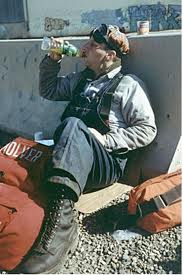
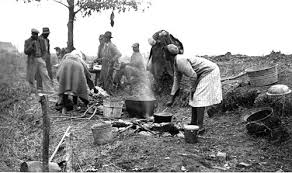
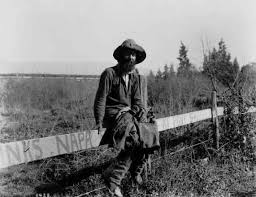
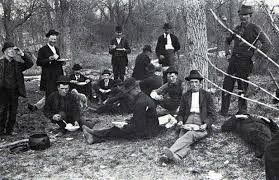

 From the office we were led to the ‘Hobo’ and locked in. The ‘Hobo’ is that part of a prison where the minor offenders are confined together in a large iron cage. Since hoboes constitute the principal division of the minor offenders, the aforesaid iron cage is called the Hobo. Here we met several hoboes who had already been pinched that morning, and every little while the door was unlocked and two or three more were thrust in on us. At last, when we totaled sixteen, we were led upstairs into the courtroom. . .
From the office we were led to the ‘Hobo’ and locked in. The ‘Hobo’ is that part of a prison where the minor offenders are confined together in a large iron cage. Since hoboes constitute the principal division of the minor offenders, the aforesaid iron cage is called the Hobo. Here we met several hoboes who had already been pinched that morning, and every little while the door was unlocked and two or three more were thrust in on us. At last, when we totaled sixteen, we were led upstairs into the courtroom. . .

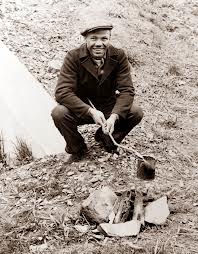


































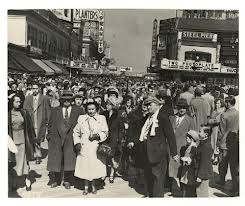

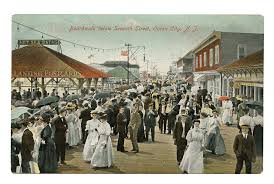

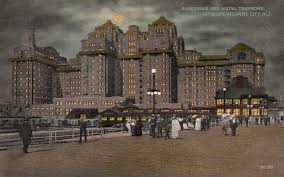




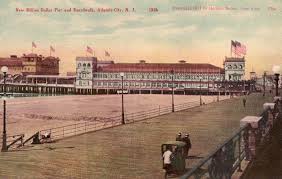

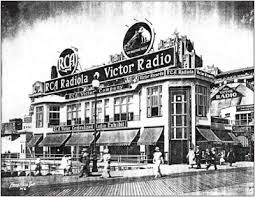




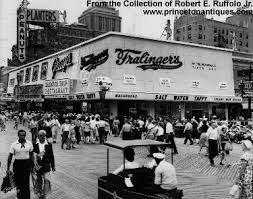
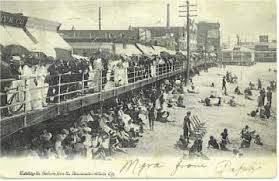

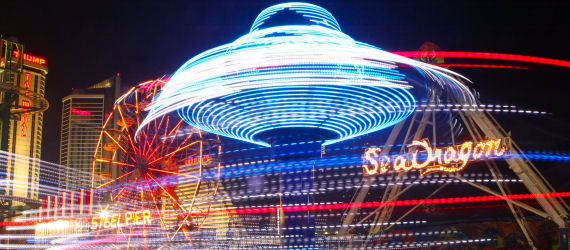

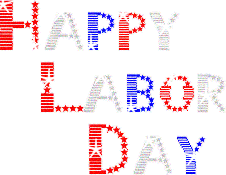




16 Vintage Photos of Labor Day Celebrations
While most of us now celebrate Labor Day with barbecues or end-of-summer vacations, the holiday was originally much more focused on labor unions and was meant to celebrate the economic and social contribution of blue collar workers. In fact, the holiday was only made a federal celebration in 1894 in an attempt to placate labor unions after the famous Pullman Strike, which resulted in 30 deaths. This labor-centric meaning is particularly apparent when looking at vintage photos of the holiday like these, which are courtesy of the Library of Congress.
1. PARADES GALORE
Original documents aiming to establish Labor Day as a holiday called for a parade that would be followed by family-friendly festivities. As a result, parades were a huge part of the celebrations during the early days of the holiday as you can see in the top picture from the Fireman’s Labor Day Parade from 1929.
2. UNIONS UNITING
Not only were the unions a big part of the reason the holiday was created, but they continued to be a big part of the celebrations for years to come. In fact, many of the early parades were made up largely of groups of different local union workers, like the Women’s Auxiliary Typographical Union pictured here in 1909.
3. FUNDRAISING FOR STRIKERS
The parades also provided unions with a good opportunity to raise funds to support striking union workers, like this man was doing on behalf of the Furriers Union in 1915.
4. FUN AND GAMES
Of course, like modern parades, there were still plenty of fun sources of entertainment for kids. These four clowns, for example, were happy to amuse the crowd in the Silverton, Colorado parade of 1940.
5. THE BAND MARCHES ON
Similarly, even a small silver mining town like Silverton, Colorado had a high school marching band present to bring a little marching music to the parade, as you can see in this 1940 image by Russell Lee.
6. THE FLOAT WITH THE MOST
As the years wore on, the floats got more elaborate and the parades started attracting larger crowds as well. Here’s a group that was fortunate enough to have balcony seating for the 1940 Labor Day Parade in Du Bois, Pennsylvania, as photographed by Jack Delano.
7. PATRIOTS UNITE
When WWII rolled around, the unions continued to provide floats for the parades, but they focused their float themes on patriotism and winning the war. In 1942, photographer Arthur S. Siegel captured the Detroit Local 600 of the Congress of Industrial Organizations showing their electrical workers electrocuting Hitler.
8. OUTHOUSE HQ
Even the clowns at that 1942 Detroit parade had it out for Hitler, showing his headquarters were holed up inside of an outhouse all while promoting bonds to support the war effort. Photograph by Arthur S. Siegel.
9. RAISE THE FLAG
Even in the midst of electrocutions and outhouses though, the Detroit parade still made a place for this adorable little girl with her American flag to show her support for the war effort and Labor Day festivities. Image taken in 1942 by Arthur S. Siegel.
10. CONTESTS FOR KIDS
As for those family-friendly festivities, well, those varied from location to location, although classic picnic games like potato sack races seemed to be pretty popular across the board. I don’t know who won this particular race shot in 1940 by Russell Lee in Ridgeway, Colorado, but I’d put my money on the big kid on the left.
11. KIDDIE RIDES
Depending on the size of the festival, some places would even put up fun carnival rides for the kids. I particularly love this picture of a tiny miner from Silverton, Colorado, taken by Russell Lee in 1940.
12. FAMILY TOGETHERNESS
The best part of the Labor Day past and present might just be families getting to spend a nice weekend together, like these miners enjoying the holiday with their youngsters back in 1942. Photo taken in Silverton, Colorado by Russell Lee.
13. FRIENDLY COMPETITION
Not everyone put away their tools on Labor Day. In fact, the miners of Silverton actually competed to show off who was the best driller. Here’s one participant hand drilling on a massive boulder, as photographed by Russell Lee.
14. RACING THE DAY AWAY
Of course, while many people enjoyed watching contests on Labor Day, most didn’t want to work on the holiday. That’s why going to the race track was so popular in Benning, Maryland back in 1916. Labor Day races like this one included both motorcycle and car events.
15. BARBECUE FOR ALL
While many modern Labor Day celebrations revolve around backyard barbecues, they used to be much larger, community affairs. In fact, this 1940 celebration in Ridgeway, Colorado required dozens of volunteers to prep, cut and serve the massive, free barbecue that fed practically everyone in the whole town. Photo by Russell Lee.
16. WAITING FOR A FEAST
Despite the rain, everyone at the 1940 Ridgeway barbecue seemed grateful to wait in line for such a delicious Labor Day treat, presumably only furthering that feeling of community. Image taken by Russell Lee.